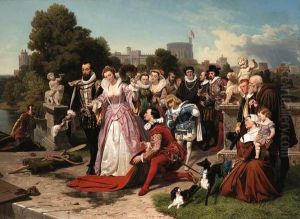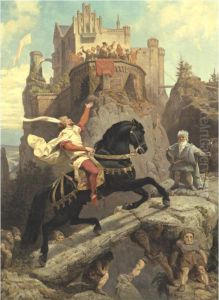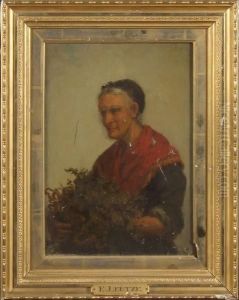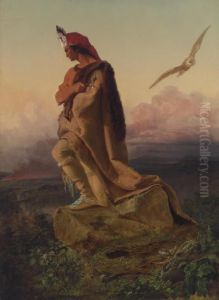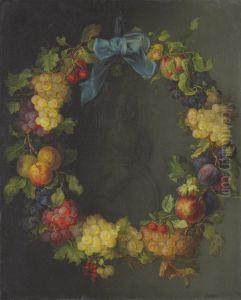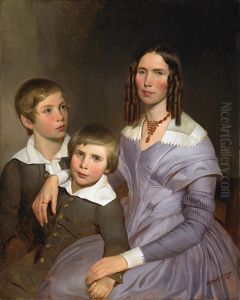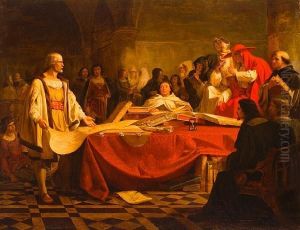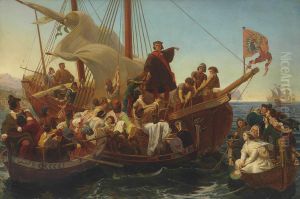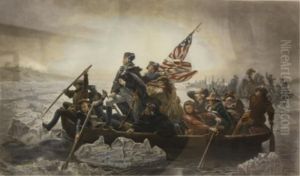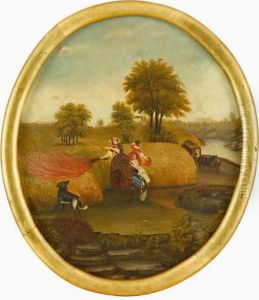Emmanuel Gottlieb Leutze Paintings
Emmanuel Gottlieb Leutze was a German American history painter best known for his work 'Washington Crossing the Delaware'. Born on May 24, 1816, in Schwäbisch Gmünd, Württemberg, Germany, Leutze was brought to America as a child by his family, who settled in Philadelphia.
His talent for art was recognized early on, and he drew attention from local patrons who helped finance his formal training. In 1841, Leutze returned to Germany and entered the Royal Academy of Art in Düsseldorf, where he became a part of the Düsseldorf school of painting, known for its detailed yet romantic historical and landscape paintings.
Leutze's works often reflected his interest in American history and were marked by a romanticized but robust portrayal of their subjects. His most famous painting, 'Washington Crossing the Delaware', completed in 1851, depicts the pivotal event of the American Revolutionary War on the night of December 25-26, 1776. The painting became an icon of American nationalism.
Throughout his career, Leutze used his art to encourage liberal reform in Germany and the United States. He was a staunch supporter of the European Revolutions of 1848, using his works to express his political sympathies. His other notable works include 'Westward the Course of Empire Takes Its Way' (also known as 'Westward Ho!'), commissioned for the United States Capitol.
Leutze's influence extended beyond his canvases. He mentored other artists and was an active member of the art community. Despite the fact that he spent much of his life in Germany, his work had a profound impact on American art and national identity. Leutze died on July 18, 1868, in Washington, D.C. His legacy is preserved in numerous collections, including the Metropolitan Museum of Art in New York and the United States Capitol in Washington, D.C.
